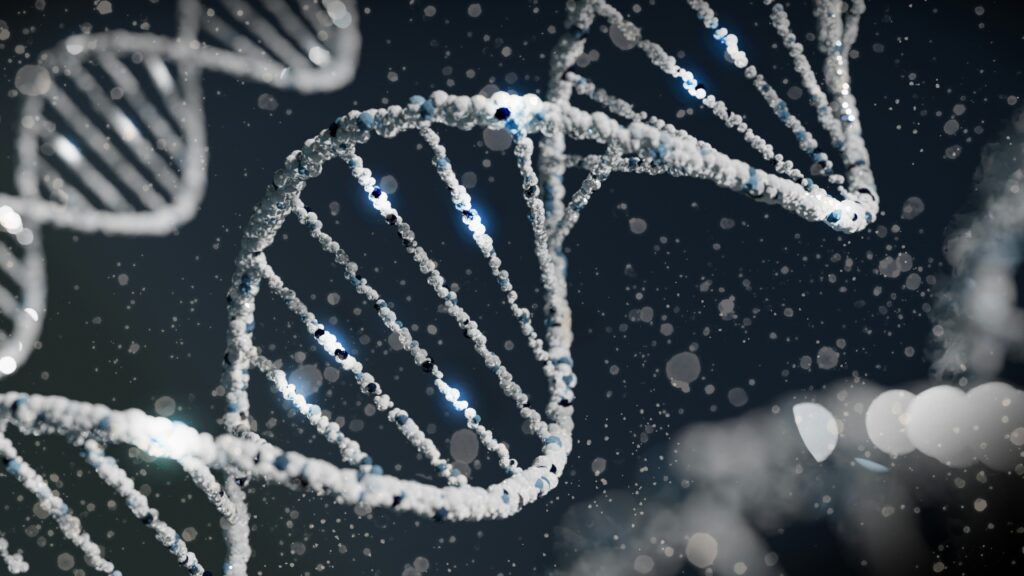This post is also available in Dutch.
This article is the fourth and final of the Donders Wonders summer series. During summer, we post four biweekly articles to dive into the brain from different angles. Perfect for reading by the pool.
Charles Darwin’s On the Origin of Species was a bomb shell of a theory that beautifully describes the evolution of species and the passing of traits from generation to generation. What was missing, however, was the “How”. With the discovery of DNA, this question was answered: Traits are passed on via our genes. Since then, we have learned a lot about the roles that our genes play in our biology and have even devised gene-editing technology, ultimately giving us the ability to edit ourselves.
Designer babies
The prospect of increasing control over our genetics brings up the possibilities of exercising that control over our children. Ideas surrounding control over reproduction are not new and are central to the Eugenics movements, which aimed at “improving” the “genetic quality” of the human population. With that goal in mind, eugenicists would attempt to exclude people and groups that were deemed inferior, usually by forcing sterilizations and marriage prohibition. In Nazi Germany these ideas would gain wide support, and formed the basis for many of the policies that led to the segregation, sterilization, imprisonment, and mass murder of millions of people.
Our gene editing technologies today, however, can change single genes with large precision. With that in mind, couldn’t we just make all our children super tall, strong, smart, and resistant to disease?
The short answer is no. The long answer is that it’s too complicated. Although some traits or diseases have strong genetic components, they are rarely caused by a single or a couple genes. More complex characteristics and diseases have many genes involved, that also interact with our environments and experiences in ways we don’t yet understand. This makes it practically impossible to control outcomes with genes alone. Even the most straightforward example, how genes affect eye color, cannot be 100% predicted by genetics.
There is also an ethical consideration. Gene editing before birth (i.e in early embryos, sperm and egg cells) doesn’t just affect the individual but makes edited genes heritable. This means that any edits will be passed on and have an irreversible impact on the human gene-pool. It is for that reason illegal across the world, but it has supposedly been done once. In 2018, a Chinese scientist edited two embryos in the hope to create resistance to HIV. While he faced a prison sentence, there has not been a clear follow up on the health, or the HIV resistance, of these children.
Given the genetic complexity of both humans and other animals, even more so with characteristics like cognitive abilities or personality traits, it will remain impossible to identify, or modify them reliably prior to birth. With the ideals of eugenicists in our recent history, it’s probably a good thing that it doesn’t actually work. All in all, designing tall, smart and resistant babies is probably not something happening any time soon, and is probably not even a feasible endeavor either.
Gene Therapies
On the other hand, we can be more optimistic about what our gene-editing technologies might accomplish in medical applications. We can take unhealthy cells and correct the DNA that causes disease in the part of the body that is affected, which does not affect future children of those treated, unlike pre-birth genetic design. In two decades or so, we could expect gene therapies to start playing a significant role in medicine. We could edit immune cells to make them better at fighting cancer or get rid of more minor nuisances like color blindness. Thanks to gene editing, debilitating brain diseases of today could become the minor nuisances of tomorrow. There are many examples of very promising work already.
Take Alzheimer’s disease, a progressive neurological disease that affects memory and cognitive abilities. An important disease mechanism is the gradual buildup of a protein that becomes toxic to brain cells. Gene therapy could help cells to clear these proteins. Another example is Huntington’s disease, which is a genetic disorder that causes brain cells to die over time. It is caused by a single gene defect and is therefore a great candidate for gene therapies. Then, there is Parkinson’s disease, another neurodegenerative disorder that affects brain cells that work with the neurotransmitter dopamine. Several genes involved in the dopamine system have been identified that could become targets for future gene therapies. Lastly, gene therapy seems a promising avenue for treating amyotrophic lateral sclerosis (ALS, also known as Lou Gehrig’s disease). This disease affects brain cells that activate our muscles. More than 50 genes are known to be involved, so it’s an understatement to call this disease complex. Nonetheless, multiple gene therapies are currently being investigated, some already in patients.
All in all, it is likely that gene therapies will become a major new tool in the belt of medical professionals in the coming decades and will become the primary investment avenue for science policy makers in the field of genetics.
Credits:
Authors: Lucas Geelen & Viola Hollestein Editors: Lucas Geelen & Viola Hollestein Translation: Lucas Geelen Editor translation: Maartje
Photo by Sangharsh Lohakare on Unsplash
